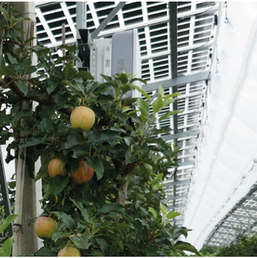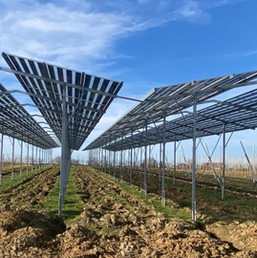top of page
Anker 1
AgriPV Anlagen können die Erträge erhöhen. Während Obst- und Gemüsepflanzen geschützt unter der AgriPV Gestellen gedeihen, kann der normale Ackerbetrieb weitergeführt werden und zugleich erzielt man Strom mithilfe der PV-Module. Dieser Strom kann wiederum u.a. für Kühlhäuser oder elektrisch betriebene Traktoren und Erntemaschinen genutzt werden.
bottom of page


















